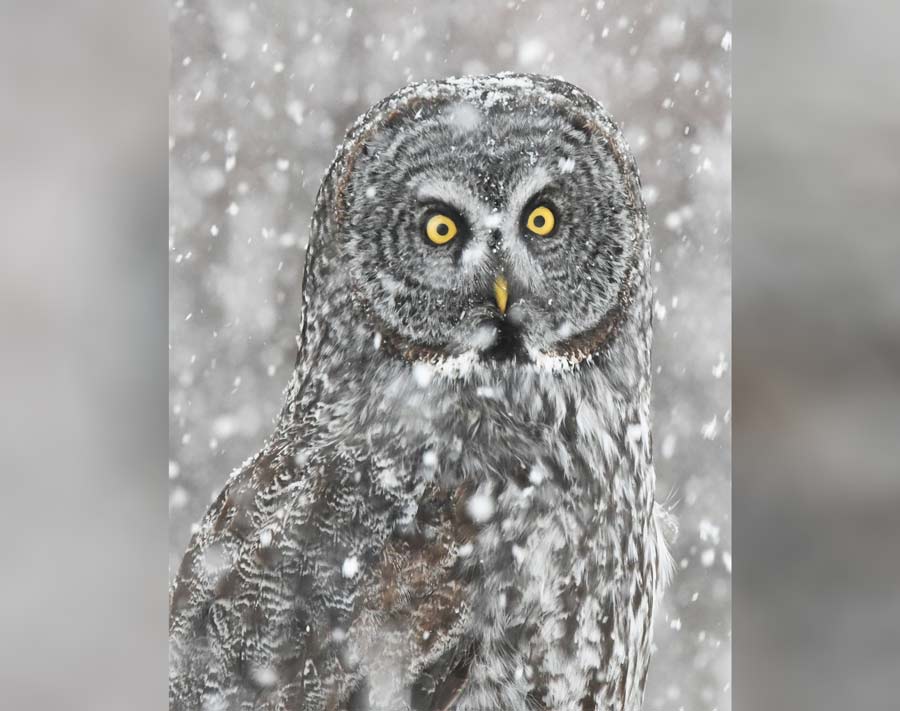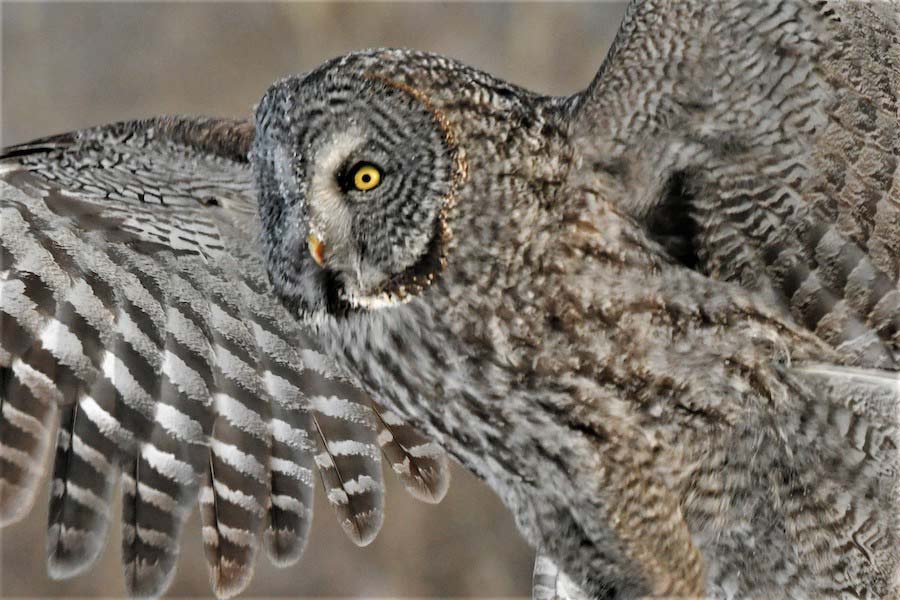It’s fun to watch the flight, perch and hunting skills of the Great Gray owls
Published at | Updated at
As I sat in my truck watching two Great gray owls catching voles in a meadow along the Henrys Fork of the Snake River, a heavy snow squall rolled in. As the thick, huge flakes fell, one of the owls flew to a steel post right next to the side of my truck. Several times, it would fly to the next post only to come back and “give me the eye.”
When the squall stopped, it flew back out away from the road to some public land to hunt again with its pal. Great grays are some of the most fascinating birds that I have ever watched.
Their ears are not symmetrical on their heads as one ear is lower on the head than the other one and one is nearer the front of the head than the other one. The huge discs around the eyes funnel the sounds of rodents to the ears, which allow the owls to know the exact location of a meal two to three feet under the snow.
Articles from experts will tell you that these owls have a record of 90% success in harvesting rodents under the snow. I have located about 11 Great grays in the river bottoms this year and I have photographed 64 dives in the snow for voles and have only seen one failure to catch a rodent.
Most mornings and evenings they will perch on the edge of a meadow, locate the sound of a rodent, usually a vole, and with one or two wing-beats start a glide. Once they get over the spot, they go into a dive by placing both feet next to their face to grab their prey, then they wiggle out of the snow, grab their meal with their beak and swallow it whole. Occasionally, they will fly the meal back to their perch before swallowing it.
From my observations of these owls, it appears that they usually try to harvest at least three voles each morning and evening before finding some thick brush to sleep off the hunt.
Great grays are listed as a “sensitive” species by the Audubon Society and therefore they do not pinpoint on their “ebird” site where they are located as some birders will chase or follow them as they hunt.

Occasionally I will study them as they hunt to find their favorite perch, then I will position myself near the perching spot and let them come to me. Recently, I had one fly within eight feet of me before landing about 20 feet above me at its favorite spot.
Most of the time, I will use my truck as a blind and park where they are hunting. They appear to be curious enough to check out the movements inside the truck and come to check me out. I have taken more close-ups of them from inside my truck than I have when following them.
One morning I parked in a summer campground as two Great grays had been located there. Two birders were working at the edge of the meadow, following them, when one of the birders got tired of packing his tripod and left it standing in the middle of the meadow. Twice one of the owls used the tripod as a perch to hunt from.
Great grays have a tendency to attract a lot of birders because they present a great opportunity to be photographed while hunting. I usually go out in the morning to photograph them because most people go out in the evening to observe them. Last week I took an evening to go out to observe the people where six owls had been working near a road. There was a van from Indiana, a car from Florida and another car from Utah as well as four local cars and trucks. All the humans were behaving themselves and shooting from the road.
I won’t list the spots where these owls are found, but an evening or morning drive along roads near a local river with large meadows may result in seeing these beautiful birds. If you see a cluster of vehicles along a road, slow down. You may have found where the Great grays are. Join in on the fun. The birds may even come and say “hi” to you.

Living the Wild Life is brought to you by The Healing Sanctuary.


